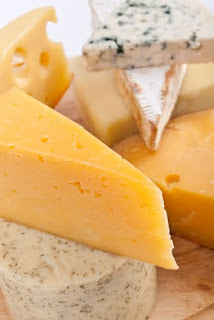Read this post in EnglishChers bons vivants, je sais que vous attendiez un billet sur le vin, eh bien le voici! Puisque c’est un sujet que je ne prends pas à la légère, j’ai pensé me diriger tout de suite vers notre expert en la matière, Nick Keukenmeester. Nick écrit non seulement des articles sur les vins pour notre magazine,
Ensemble Vacances, mais il est aussi dans l’industrie vinicole depuis des années et possède l’emploi dont tout bon vivant rêve, directeur des ventes aux particuliers pour Lifford Wine Agency à Toronto.
Les vins du Vieux ContinentPar Nick Keukenmeester
J’entends souvent les gens se plaindre de ne pouvoir trouver de bons vins européens à prix raisonnable. Pourtant, il suffit d’aller voir du côté des régions et des producteurs qui sont davantage négligés par les consommateurs d’ici pour parfois dénicher un excellent cru à prix avantageux.
Surveillez les productions du Sud de l’Italie, notamment des Pouilles, de la Sicile et de la Basilicate et les vins rouges que vous connaissez moins, comme le Negroamaro, le Nero d’Avola et l’Aglianico. Vous serez étonné par leur richesse de concentration, d’autant plus qu’ils vous coûteront moins cher que les traditionnels Shiraz d’Australie. Plutôt que de choisir un Barolo, essayez des vins de table du Piémont que les habitants du coin se réservent pour euxmêmes. Le Barbera est riche en texture, avec une pointe de saveur chocolatée très plaisante au palais. Il est beaucoup moins cher et se boit plus aisément que la moyenne des vins de cépage Nebbiolo qu’on trouve dans cette région. Les vins blancs délicats, produits avec le cépage Cortese (à Gavi) ou Arneis sont à la fois surprenants et très abordables.
Une région terriblement négligée est celle du Douro au Portugal d’où provient le porto. Ses vins de table sont réalisés à partir de cépages tels que le Touriga Nacional, le Tinta Roriz et plusieurs autres. Riches en fruit, leurs tanins sont profonds et leur acidité plutôt équilibrée. Vous pourrez facilement les conserver quelques années ou les boire sans plus attendre pour agrémenter un grand repas.
Certaines régions d’Espagne encore méconnues du grand public offrent également des vins d’excellente valeur. Le domaine Abadia Retuerta se situe à quelques kilomètres de la célèbre région vinicole de Ribera del Duero. Les vins qu’il produit se vendent à la moitié du prix de ceux qui proviennent des vignobles avoisinants, tout simplement parce qu’ils ne peuvent tirer profit de la renommée de la région voisine. Ils produisent pourtant d’excellents vins à partir du cépage Tempranillo, ce noble raisin typique à l’Espagne, fruité avec un côté végétal qu’on ne retrouve pas dans le classique Rioja. D’autres régions ignorées comme le Toro, le Rueda et le Jumilla produisent des vins de qualité à une fraction du prix de leur valeur réelle en utilisant des cépages comme le Monastrel (Mourvedre), le Garnacha (Grenache), le Tempranillo et même le Verdejo, donnant un vin blanc tout en fraîcheur.
Même en France, on trouve d’excellents vins à prix abordable. Recherchez les vins du Languedoc-Roussillon et ceux du Beaujolais, un vin rouge de Bourgogne fruité et aromatique qui est produit à partir du cépage Gamay, contrairement à ses voisins qui utilisent le Pinot Noir. Ici, les grands crus, comme le Morgon ou le Fleury se révèlent des vins d’exception. L’élégant Beaujolais Villages est aussi délectable à prendre avec ou sans repas.
On trouve un Beaujolais Villages de la maison Louis Jadot pour moins de 20 $ presque partout au Canada.
 Through no fault of my own I find myself on a cruise ship floating in the Mediterranean. This may not seem too bad, but I have a phobia of big ships and am spending my days in denial, pretending I'm not here. Still, every cloud has a silver lining. Cruise ships are like All-Inclusives and the wine is poured in complimentary quantities and often has that 'complimentary' quality too.
Through no fault of my own I find myself on a cruise ship floating in the Mediterranean. This may not seem too bad, but I have a phobia of big ships and am spending my days in denial, pretending I'm not here. Still, every cloud has a silver lining. Cruise ships are like All-Inclusives and the wine is poured in complimentary quantities and often has that 'complimentary' quality too.




 But there is one little bite from that trip that I will always remember: my first (and only!) taste of
But there is one little bite from that trip that I will always remember: my first (and only!) taste of 




